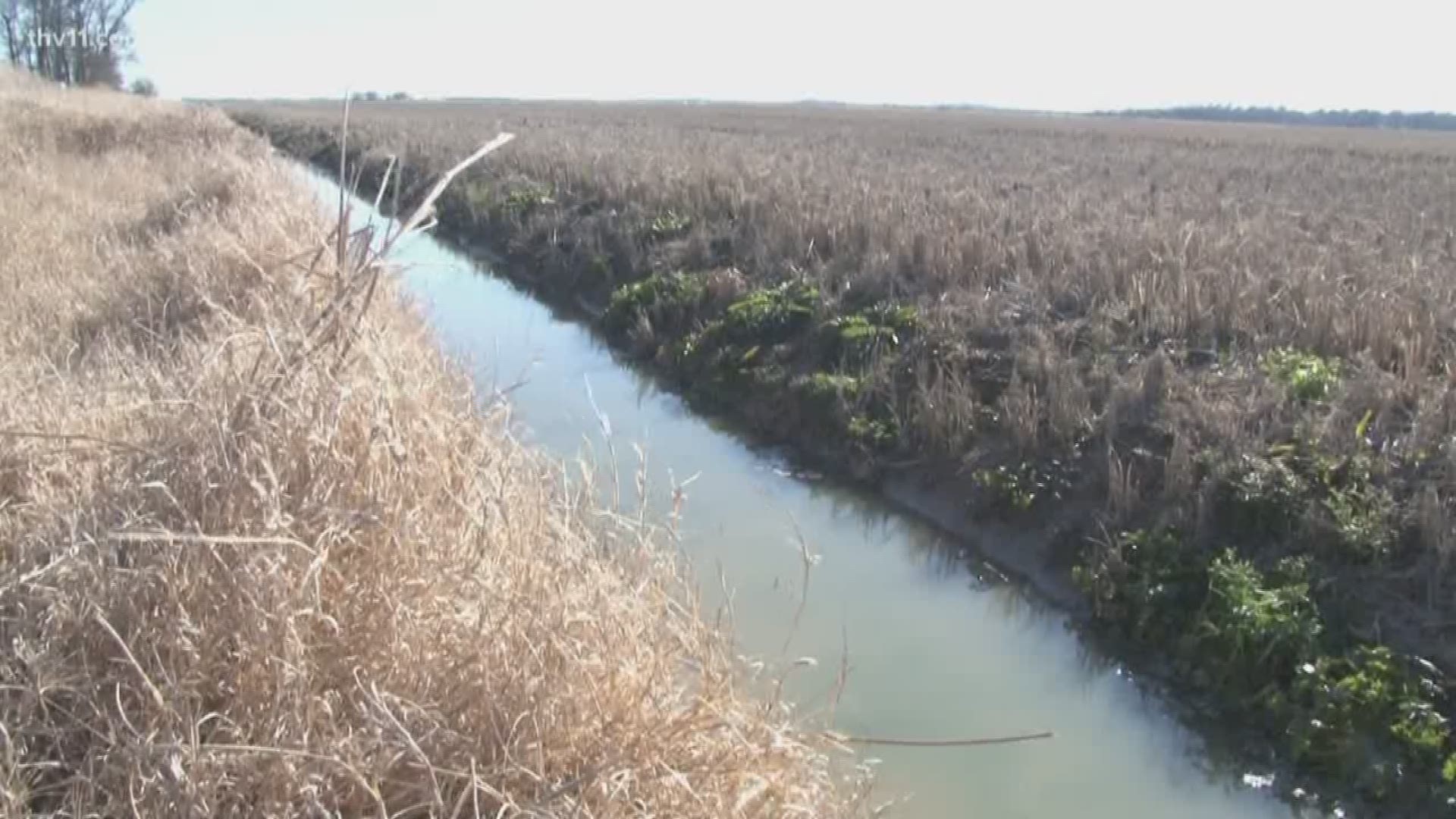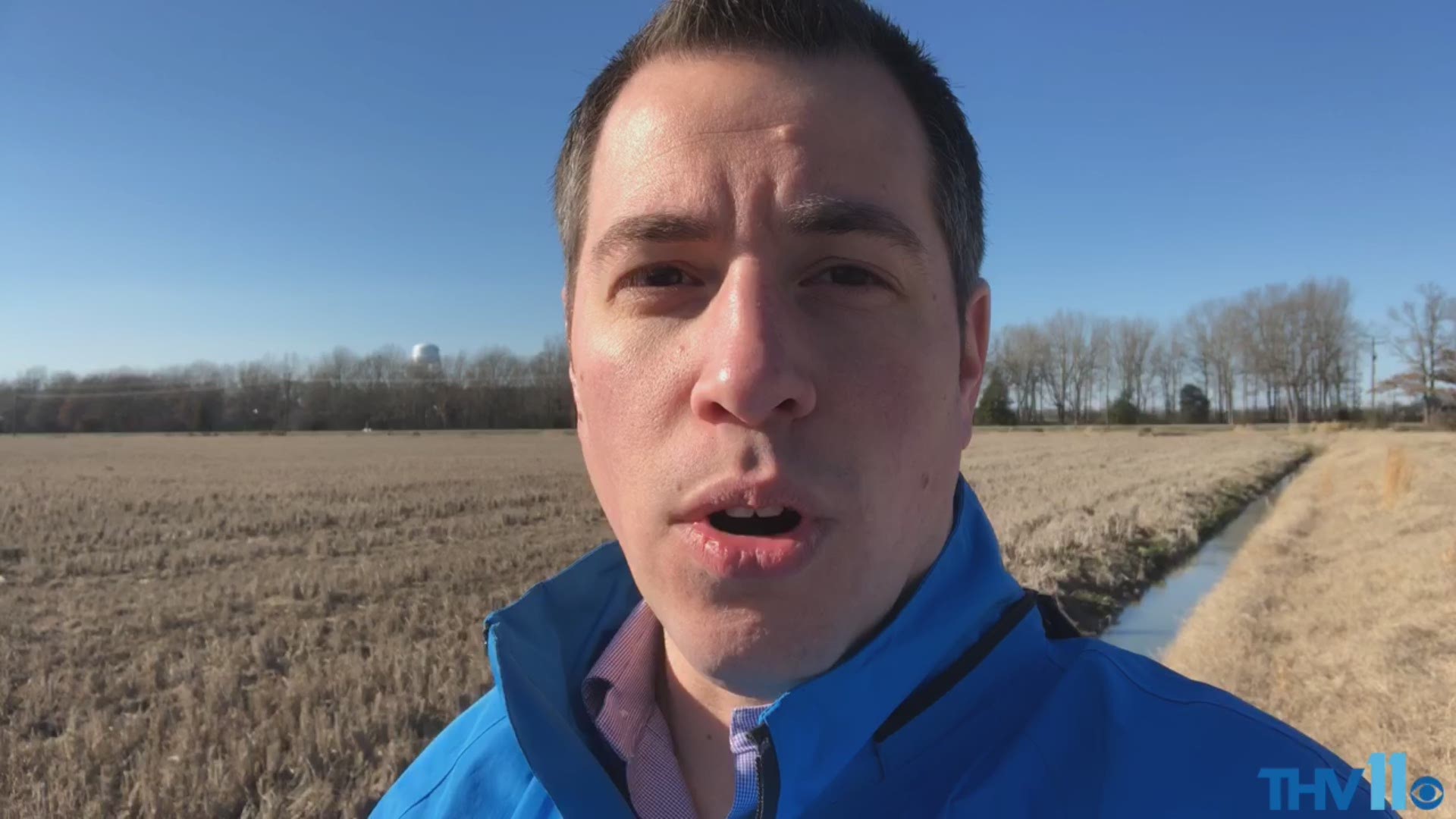As our wet winter continues, farmers across Arkansas are sweating, wondering if they will ever be able to plant their crops.
That that’s especially true for rice growers, who are feeling the strain of the rain.
Normally, fields like those along Highway 70 in Lonoke County would be busy, as farmers get ready to plant their crops. But, at this point, they have no idea when rice season will begin.
“We’re really just staring at it,” Jarrod Hardke said Tuesday, “going, ‘we haven’t even truly started yet on the ’19 season.’”
Jarrod Hardke, the Rice Extension agronomist for the University of Arkansas’s Division of Agriculture, said stress levels are rising for our state’s farmers.
“We’re very much approaching a 10 [out of 10] for a lot of growers right now,” he stated.
That number is because it correlates to the level of water that remains in their fields. Hardke, whose research of soil conditions helps farmers around the state plan their crops, said their earth is too wet, or too frozen, to work with, and that’s been the case since fall. This is not the first wet winter, but Hardke said most of them feature a break in the weather to allow farmers to prep their fields.
“Unfortunately, 2018 harvest—which was terrible,” Hardke said, “in that it was prolonged and wet, has really never given way to preparation for the 2019 season. So, at this point, we’re really just standing here with a lot, if not almost all of the field work, preparation from last year’s harvest to be able to plant this year, is still left to be done.”
Hardke’s forecast for the state’s overall rice production keeps falling, and he currently predicts a statewide output of approximately 1.2 million acres. Some years, a smaller yield would mean farmers could focus more on corn or soybeans, but Hardke said it is nearly too late to make that switch. And he added that a smaller yield might not translate into higher prices.
“At this point in time, none of our main commodities are—again, nationwide—are showing any appreciable increases at this time,” he stated. “There’s some slight rises for fall prices, but when you start penciling out the net returns for growers right now for any of these, it’s not looking very good right now. So, any of those, even slight, increases in costs are going to be felt very, very hard.”
Ideally, farmers would start planting in the next week or two, then ramp up after April 1. But with more rain in the forecast, Hardke said it could be too wet to put seeds in the ground for quite some time.
“We have to prepare it all first,” he explained, “we don’t get the opportunity to just drop in and start planting, so the delay is even greater than I think most truly consider at this point.
“A lot of the normal tillage prep work that would be done, well, now we’re gonna be in a mode of what I would best describe as excessive tillage.”
He added that making multiple tilling runs across a field would be a considerable expense this year. He said each pass costs a farmer roughly $10/acre, but ruts have become so deep since fall that it will take several passes to smooth out the earth. With many fields stretching over 10,000 acres or more, the cost to prepare a rice field this year could cost some farmers hundreds of thousands of dollars, before a smaller-than-average yield ever sells.


